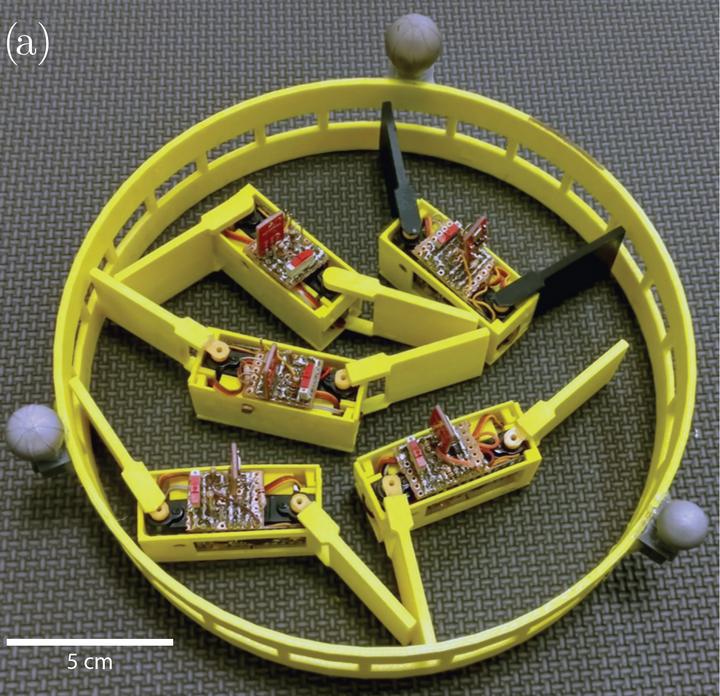
Abstract
Smarticles or smart active particles are small robots equipped with only basic movement and sensing abilities that are incapable of rotating or displacing individually. We study the ensemble behavior of smarticles, i.e., the behavior a collective of these very simple computational elements can achieve, and how such behavior can be implemented using minimal programming. We show that an ensemble of smarticles constrained to remain close to one another (which we call a supersmarticle), achieves directed locomotion toward or away from a light source, a phenomenon known as phototaxing. We present experimental and theoretical models of phototactic supersmarticles that collectively move with a directed displacement in response to light. The motion of the supersmarticle is stochastic, performing approximate free diffusion, and is a result of chaotic interactions among smarticles. The system can be directed by introducing asymmetries among the individual smarticle’s behavior, in our case, by varying activity levels in response to light, resulting in supersmarticle-biased motion.
Related Press
- Smart Swarms Seek New Ways to Cooperate. Kevin Hartnett. Quanta Magazine, February 2018. (Also featured in ACM TechNews).